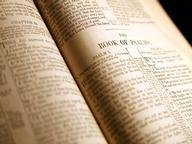Quiz Answer Key and Fun Facts
1. The Upanishads were the first written texts to influence a large number of beliefs in East Asia. With which civilization are they associated?
2. Towards the middle of the Bible, there's a shift in writing style that differs from the historical type that precedes it. It more closely resembles "wisdom literature" in the Ancient Near East. There are five books in the Bible that have been deemed "The Wisdom Books". Which three of the following are included in them?
3. A collection of writings from the Far East were put together in 1927 to form a funerary text that describes the passing from life to death. Also known as Bardo Thodol, what name was given to it?
4. Kabbalah is a mystical interpretation of the Torah and has its roots in a Medieval book called the Zohar. Which metaphysical motif is explored in detail with Kabbalah?
5. The Shinto religion developed in Japan as far back as 600 BC. One of its founding books is called Kojiki, which in English translates to "An Account of Ancient Matters". What does this book mainly consist of?
6. Taoism and Confucianism are two religions that arose in Chinese civilization roughly during the same century. They were both influenced by a divination manual that was written centuries prior to their development. What was this text called?
7. In the 19the century, many travelers from Europe brought back jewels of literature from the Middle East and translated them for western readers. Known for its symbolic poetry and story-telling, what type of Islamic text were most of these translations from?
8. The Ancient Egyptians wrote some of the earliest recorded texts in history. Which of them contained a number of verses that were thought to protect the pharaoh's remains after he died?
9. The most sacred part of the Avesta is called the "Gathas", which are a collection of hymns written by Zoroaster. What is the name of the Omniscient Creator that he invokes and glorifies in the hymns?
10. The Book of Revelation in the Bible is known for its vivid imagery, describing a strange type of battle. Including scholars, what do most people agree that this book is about?
Source: Author
atlas84
This quiz was reviewed by FunTrivia editor
agony before going online.
Any errors found in FunTrivia content are routinely corrected through our feedback system.

